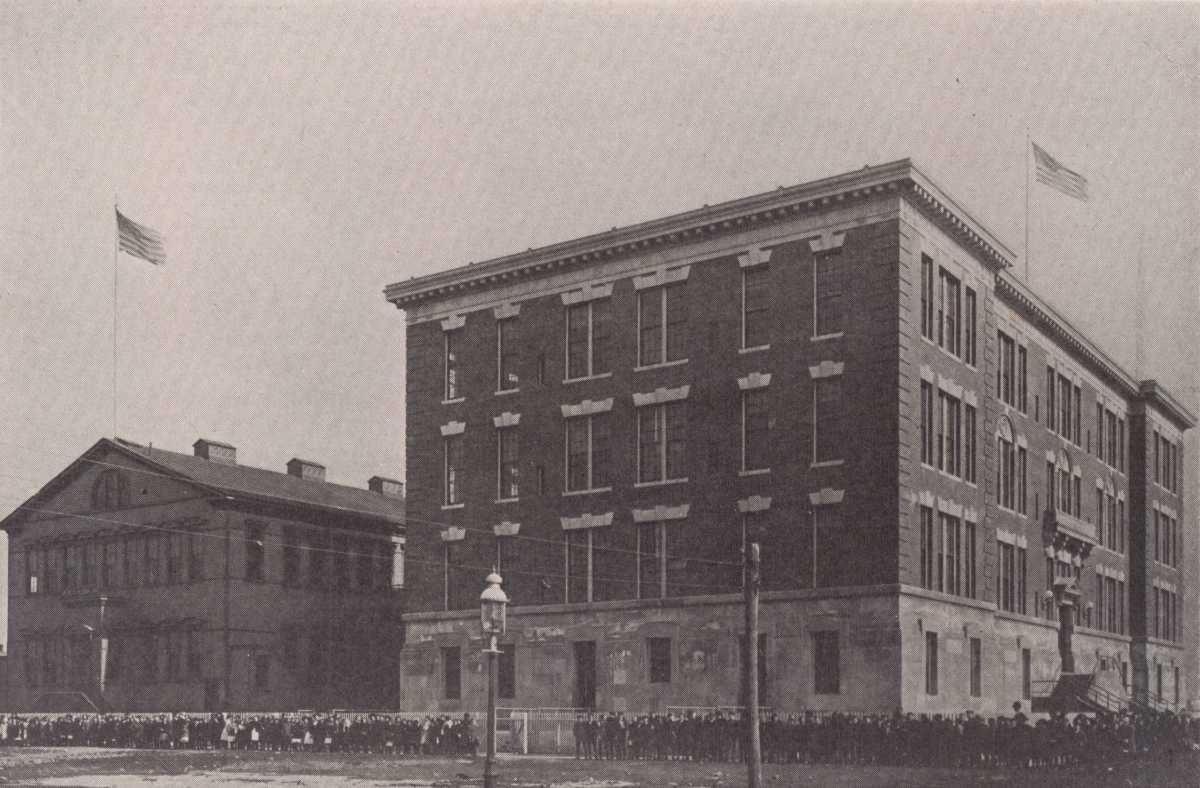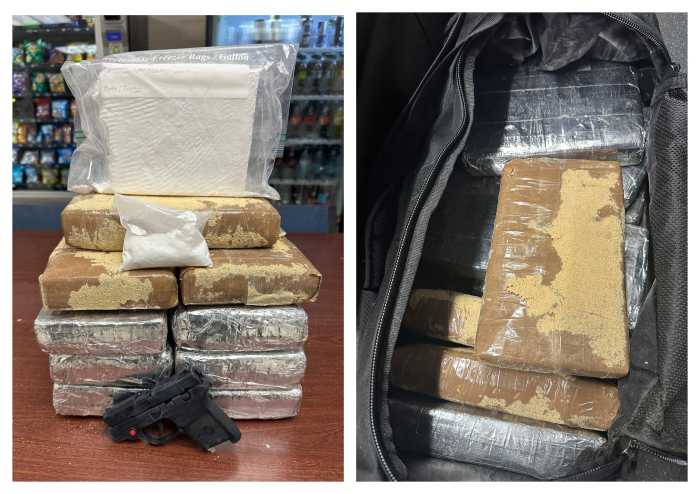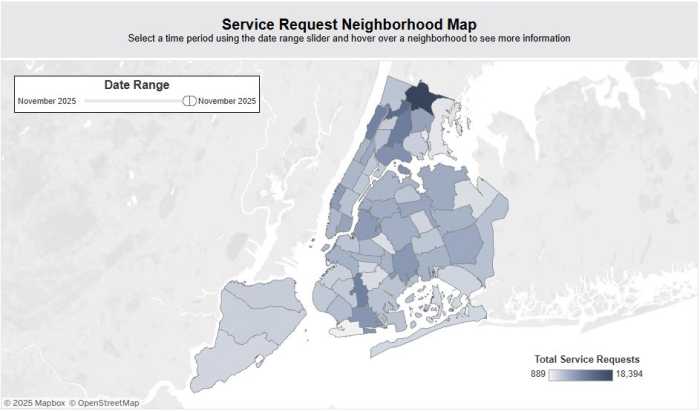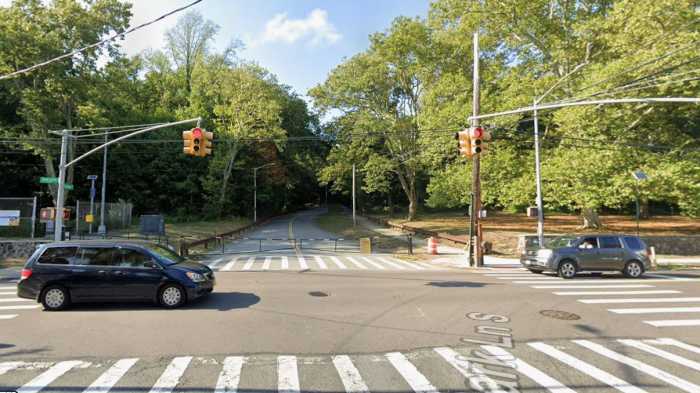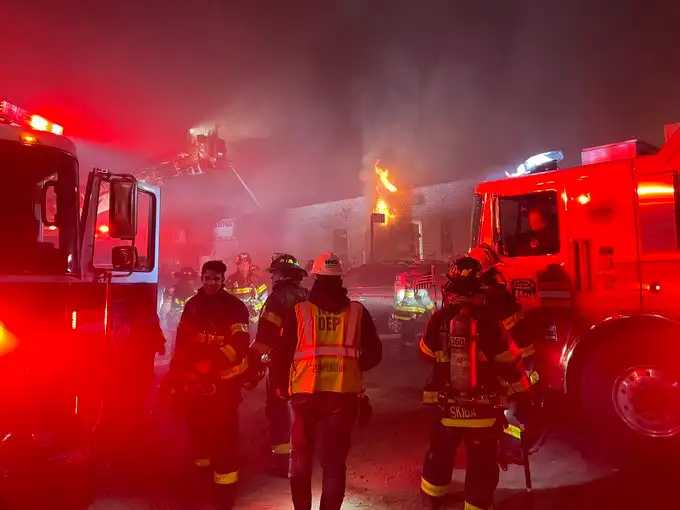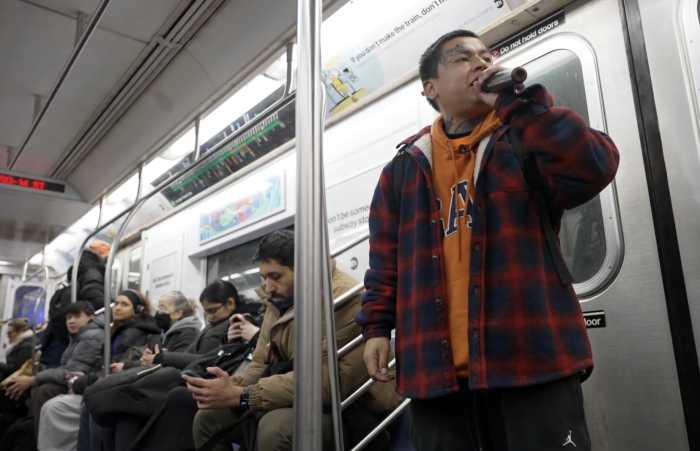The original Public School 68 in Glendale was a wooden building constructed on farmland acquired on Oct. 9, 1891 from Margaretha Rathjen, widow of John Henry Rathjen.
The Rathjen farm consisted originally of 20.639 acres with 18.126 acres on the east side of Cypress Avenue and 2.513 acres on the west side. The majority of the farm was bounded by what today are Summerfield Street on the north, Cypress Avenue on the west, Forest Avenue on the east and 79th Avenue on the south.
After John Henry Rathjen died, his widow and children decided to sub-divide the farm. The Board of Education Union Free School District 9 of Newtown Township purchased one square block of land from the Rathjen family for $3,000. The school site was bounded by the Long Island Rail Road Bay Ridge branch on the north, Bergen Avenue (now St. Felix Avenue) on the south, Henry Street (now Seneca Avenue) on the west and John Street (now 60th Place on the east.
A two-story wooden school building with 12 classrooms was built on the site and opened in 1892. it was designated “School #9,” with the number taken from the School District. When it opened, the old four-room school house on the north side of Cooper Avenue east of Cypress Avenue was closed, and the building sold.
Union Free School District #9 covered a large area extending from the boundary line between Kings and Queens County, east to Trotting Course Lane (now Woodhaven Boulevard) and from East New York north to Metropolitan Avenue.
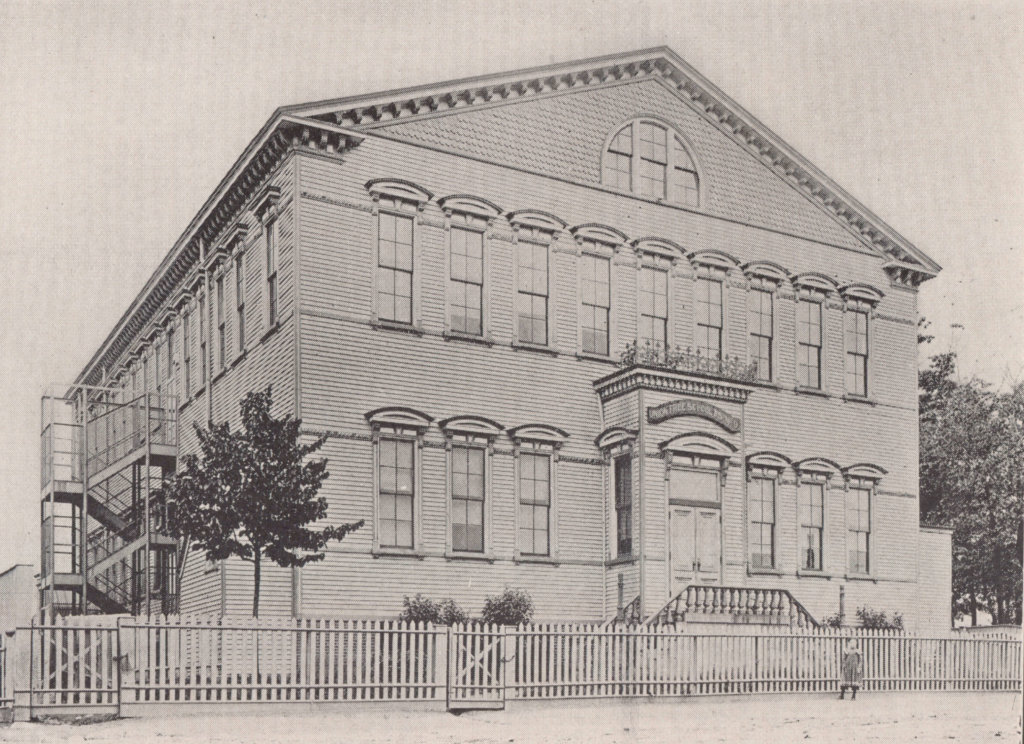
When School #9 opened in the fall of 1892, William Dumond was named principal. He was 28 years old and had been teaching for six years. He was assigned a staff of six teachers. The annual expenses to run the school were about $12,000. This included the salaries of the principal and staff. This sum was raised by taxes on property within the school district.
After Queens County was incorporated into New York City in 1898, the school came under the Board of Education and was renamed P.S. 68. The population growth in the area soon caused the city to start seeking additional classroom space for students, and ultimately build a bigger and better school.
By 1907, desks, chairs and blackboards were moved into the nearby Ridgewood Park Hotel, which became an annex for P.S. 68 serving 10 classes. Prior to the opening of the annex, 24 classes attended P.S. 68, with the school divided into morning and afternoon sessions.
After the annex opened, the 14 remaining classes at P.S. 68 were consolidated into 12 classes, and the school resumed full-day sessions. However, as the building boom continued in the area, by the fall of 1907, ten more classes had to be formed — and P.S. 68 was back to having divided sessions.
A new four-story brick building for P.S. 68, which began construction years earlier, was finally completed in March 1908. The classes were promptly shifted into the modern school which had 24 classrooms.
Shortly after the new school opened, the Evergreen Board of Trade (the neighborhood adjacent to the school was then known as Evergreen) organized a flag presentation at the P.S. 68 auditorium on April 10, 1908. The elaborate program included a performance by the Hebrew Orphan Asylum band and a speech by Joseph DeBragga, the commissioner of sewers in Queens County. Pupils from grades four through eight presented various selections.
The P.S. 68 school community held another grand celebration in March 2008 as they celebrated 100 years since the current school building opened. The Ridgewood Times reported on the occasion in its March 27, 2008 issue.
“The celebrating began with the start of the current school year, when students arrived last September to find that mylar balloons — the kind found at birthday parties — had been tied to the fence outside the building at 59-09 St. Felix Ave., a location near the Ridgewood/Glendale border.
Signs of a 100th birthday celebration were all around when the current school year began at Ridgewood’s P.S. 68, which is marking its centennial. Principal Anne-Marie Scalfaro (center) is pictured with Assistant Principal Karen Gleason (at left) and Assistant Principal Kathleen Murphy.
“The teachers brought them,” explained Anne-Marie Scalfaro, now in her second year as principal of P.S. 68, regarding the message-bearing balloons that had greeted students.
It’s an indication of the spirit that seems to permeate the place, known as the school where New York Yankees legend Phil Rizzuto was a student and Elsie O’Connor, the mother of actor Carroll O’Connor, was a teacher.
Asked to cite the one thing about P.S. 68 that someone outside its community would be unlikely to know, the principal was quick to respond.
“The staff—we have a staff of teachers who are dedicated to teaching children and who are supportive of other teachers,” said Scalfaro, who had been a teacher at Ridgewood’s I.S. 93….
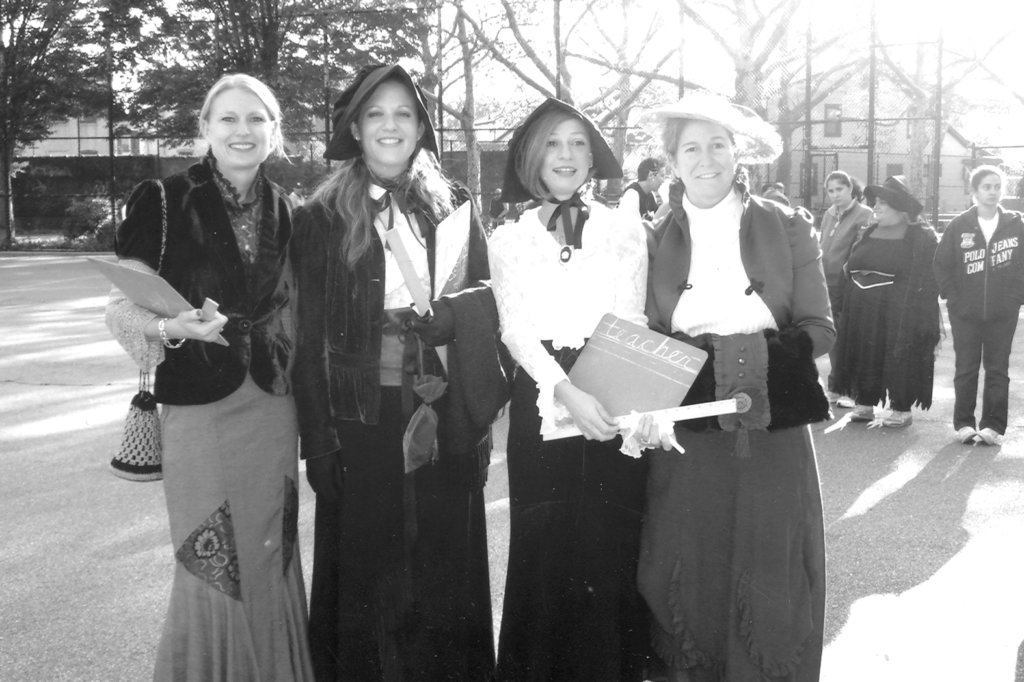
Since that first day of school last September, every month at P.S. 68 has seen some special event or activity that’s tied in some way to the centennial while reflecting something particular to the month.
To kick things off in flying fashion, September saw a “Wishes on Wings” event in which children assembled outside to release 100 butterflies that had been purchased solely for that purpose. The live butterflies had been contained in small blue-colored packets. In conjunction with the release, the children made their wishes, written onto paper butterflies.
October was harvest time and children harvested facts about P.S. 68, which they wrote on pumpkins.
It was a star spangled dance routine as these kindergartners got into “The Swim” of things at P.S. 68’s recent International Dance Festival event.
For November, children listed 100 reasons why they are thankful. In December, they watched A Christmas Carol and entered into a discussion about the past, present and future.
January meant ringing in the New Year with resolutions, followed by February’s writing on hearts why it’s easy to love coming to school at P.S. 68. In addition, the 100th Day of School was acknowledged during February.
March, a month known for shamrocks, inspired a listing of 100 reasons why the school’s population is lucky to be at P.S. 68.
April has brought a showering of poems about the venerable institution….
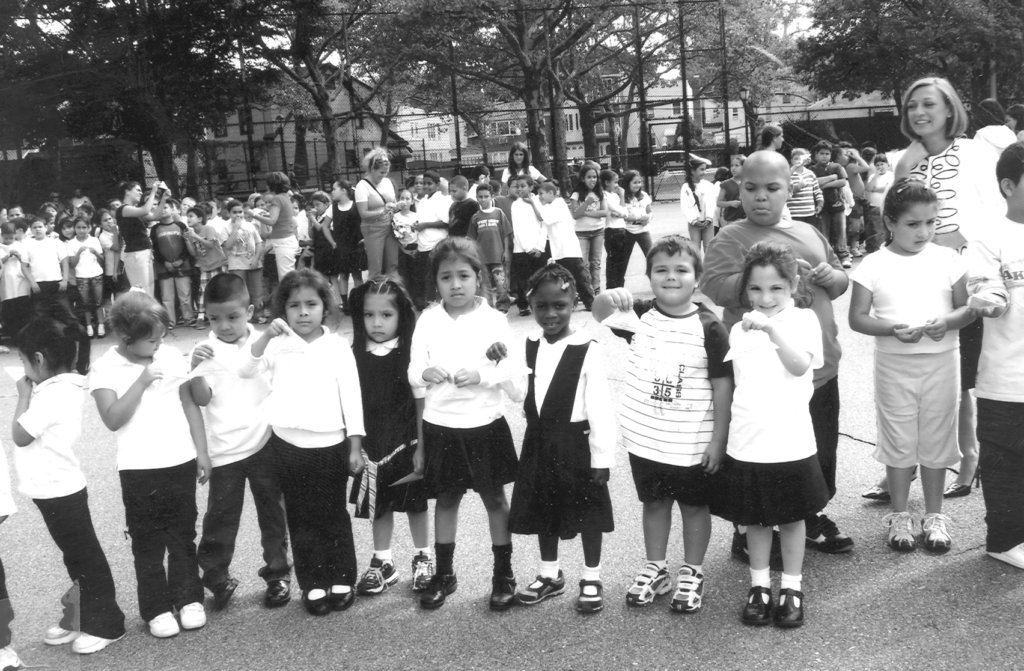
Within the last ten years, P.S. 68 has enjoyed some relief from the overcrowding that had made teaching a difficult challenge for the educators who worked there.
Not so long ago, there were approximately 1,100 students enrolled. Most did their learning at the main building on St. Felix Avenue, while two upper grades attended an annex where Wertheimer was assistant principal, located on Cypress Avenue at the former site of the Ridgewood post office. P.S. 87 in Middle Village provided space for another annex, one that served kindergartners.
Improvements with structural changes to the main building—among them, the conversion of specialized rooms such as the boys’ workshop and girls’ sewing room into classrooms—plus the construction of a mini-building extension were factors in easing overcrowding. In addition, the opening of a new Ridgewood school, P.S. 239, and a rezoning of Glendale’s P.S. 91 reduced the numbers at P.S. 68….
Just as she is quick to credit the people who work at P.S. 68, Scalfaro is grateful for the contributions of her parent volunteers. She mentioned the success of a recent Family Bingo event, sponsored by the Parents Teachers Association, and the part that parents played in a celebration of the birthday of Dr. Seuss. Parents also take part in a Family Field Day in June.
Among other P.S. 68 events, activities and programs, Scalfaro cited the Parents Crafts Club, a program that makes the facilities of the school library available to parents, and a program that includes a math workshop for parents for whom English is a second language.
In addition to the various events that call for parental involvement, there’s the School Leadership Team in which a group of parents and teachers meet on a monthly basis.
When it comes to building success at a school, “It’s a team effort,” Scalfaro beamed.
Sources: The Sept. 4, 1986 and March 27, 2008 Ridgewood Times.
* * *
If you have any remembrances or old photographs of “Our Neighborhood: The Way It Was” that you would like to share with our readers, please write to the Old Timer, c/o Ridgewood Times, 38-15 Bell Blvd., Bayside, NY 11361, or send an email to editorial@ridgewoodtimes.com. Any print photographs mailed to us will be carefully returned to you upon request.

